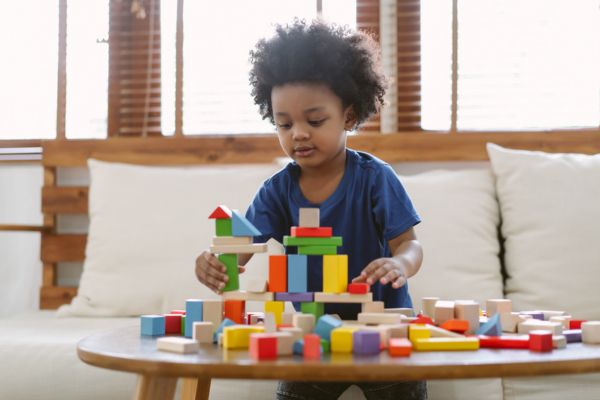
When children understand directional language, it not only helps them follow directions or explain things themselves, but it helps them navigate the world. Humans use spatial awareness to read maps, build things, and understand the way the world moves.
Let’s go on a short trip to think about how we use spatial learning in everyday life. We use spatial learning when we pack a trunk and determine how much can fit inside, when we navigate maps to figure out where we are going, when we make sure we don’t tap the back of the cars in front of us, and when we squeeze into tight parking spaces. All of these activities require us to use our spatial awareness, which is a skill that is developed in early childhood. It is a skill that relates to our understanding of how objects move in space and a mathematical skill that is closely connected to other areas of development, such as children’s physical development, language development, and cognitive development, particularly in the area of problem solving.
Infants develop their sense of spatial awareness in conjunction with the development of their eyesight. They start to strengthen their eyes as they track moving objects that interest them, and start to discern shapes on a mobile, butterflies flying in front of a flower, or a ball that rolls across the living room floor. Adults can foster their sense of spatial learning in infancy by pointing to the objects that capture their attention and narrate what is happening.
As children grow and learn to work with toys, tools, and their bodies that are gaining mobility, educators and caregivers can support this stage of development with activities that enhance spatial learning in its various modalities. For example, for spatial awareness as it relates to children’s physical development, educators and caregivers can introduce activities that encourage children to understand their own bodies in space. Infants, toddlers, and preschool-aged children need many opportunities to explore the way their bodies move in a space, so we highly recommend lots of outdoor time where children can crawl under plants, slide down slides, play tag, and maneuver on tricycles. Educators can introduce simple games like our “Home Base” game, which invites children to start and stop quickly and try to fit on a home base during movement games. Indoors, a classic option is to play in boxes so that they understand the way their bodies fit into a small space. Additionally, educators can support children by engaging in activities that relate to spatial learning language, such as up, down, diagonal, across and behind. These types of activities help children understand how to describe where things are or how they are designed, such as our “Butterfly Symmetry” game or “Building Bridges.” And of course, we always recommend activities that invite you to move pieces across a map, such as board games or our “Friend Blocks” activity.